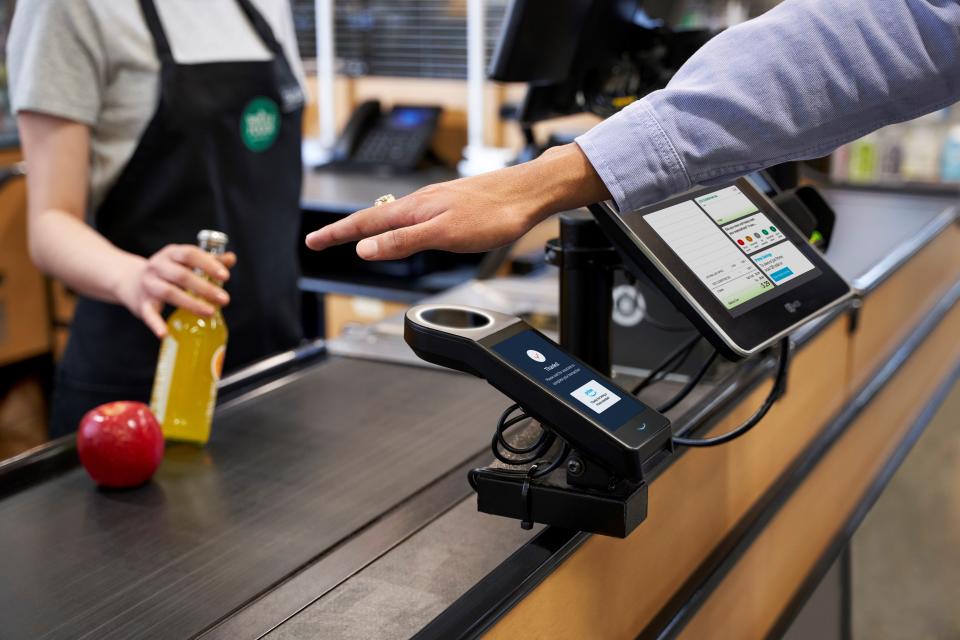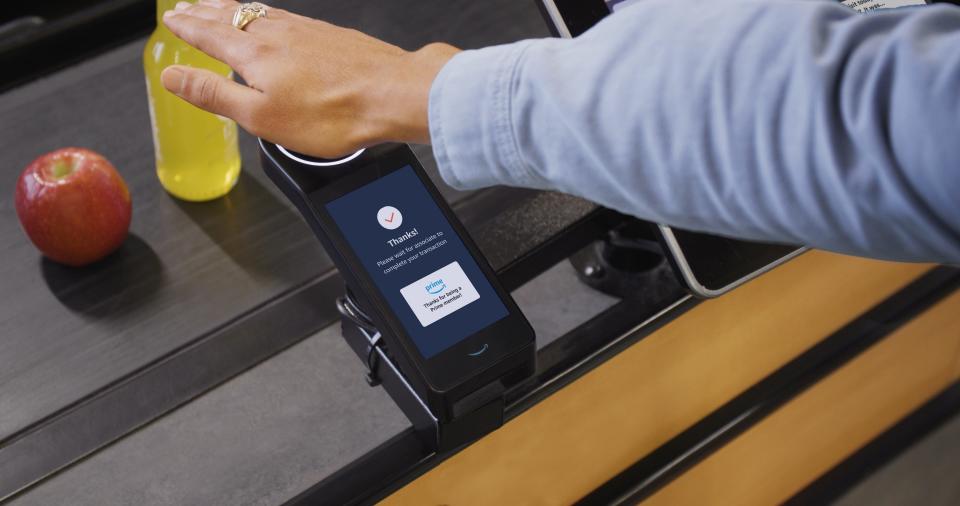High-tech checkout: You can start using your palm to pay at Austin-area Whole Foods stores
Checking out at Whole Foods and forgot your debit card at home?
You could just scan your palm and pay, instead.
It might sound like something out of a science fiction movie, but that’s the idea behind Amazon’s new payment product Amazon One, which the company rolled out in the Austin market this week.
Amazon, which acquired Austin-based Whole Foods in 2017, said Tuesday that its palm-based payment technology can now be used in the Whole Foods store at the Arbor Trails shopping center in South Austin.
In the coming weeks, all Whole Foods locations in the Austin metro area will be adding the payment option. Austin is the first region outside of Seattle where all Whole Foods will have Amazon One payment options.
"We are always looking for new ways to satisfy and delight our customers and offer convenient options to improve the shopping experience," Leandro Balbinot, Whole Foods chief technology officer and senior vce president, said in a written statement.
More: Whole Foods co-founder, CEO John Mackey to retire after four decades with company

How to use Amazon One
To use the payment technology, a customer must enroll in the Amazon One service, make scans of one or both palms, and link a credit or debit card. The technology works by analyzing multiple aspects of your palm with Amazon vision technology, which works to select distinct identifiers on each person's palm to create a palm signature. Once enrolled, customers can go to the checkout counter as usual and hover their palm over the Amazon One device to pay.
Amazon has been testing the technology in Seattle-area Whole Foods store and nationwide in other Amazon-owned stores including Amazon bookstores. It launched the technology in 2020 in its Amazon Go stores, which are designed to let customers "just walk out."
Amazon has been expanding its technology into the grocery business since it acquired Whole Foods five years ago. Amazon Prime customers get discounts at Whole Foods and can also get Whole Foods and Amazon Fresh curbside and delivery through their Amazon account.
More: The owners of Tiff's Treats wrote a book — we got some behind-the-scenes morsels
Thi Luu, director of product management for Amazon Physical Retail Technology, said the pay-with-your-palm technology is designed to make everyday activities easier and more convenient.
“We built Amazon One to offer a quick, reliable, and secure way for people to identify themselves or authorize a transaction while moving seamlessly through their day,” Luu said.

Will Amazon One be expanded for use beyond grocery stores in Austin?
It's unclear if Amazon plans to expand its palm-payment technology beyond grocery stores in Austin, but the technology is already in use in several locations, according to the Amazon One website. In Seattle, Amazon already has the technology rolled out for vendors at Climate Pledge Arena. In Colorado, ticketing agency AXS uses the technology in at least two venues, Red Rocks Amphitheatre and Mission Ballroom.
Previous Amazon One announcements also make it clear the company is considering the technology's expanded use potential.
"In most retail environments, Amazon One could become an alternate payment or loyalty card option with a device at the checkout counter next to a traditional point of sale system. Or, for entering a location like a stadium or badging into work, Amazon One could be part of an existing entry point to make accessing the location quicker and easier," a 2020 company announcement said.
What does Amazon envision for Amazon One in the future?
The company said it sees the product as having broad applicability beyond Amazon retail stores, with plans to market the service to third parties including other retailers, stadiums, and office buildings.
One of Austin's most successful startup stories, Whole Foods began with a single store on North Lamar Boulevard in 1980. The company went public in 1992 and debuted on the Fortune 500 list in 2005. It grew into a chain of more than 460 stores by the time it was sold to Amazon in 2017 in a deal valued at $13.7 billion.
This article originally appeared on Austin American-Statesman: You can use your palm to pay at Austin-area Whole Foods stores

